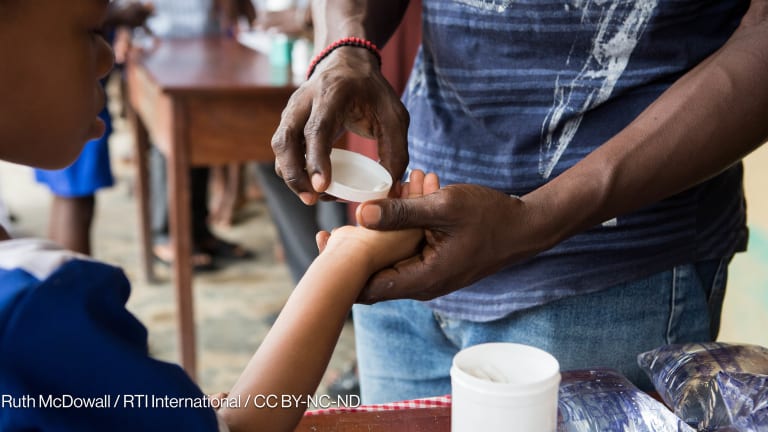
At first glance, a mosquito net might look simple, but it is in fact the product of decades of research and development and hundreds of millions of dollars of investment.
Today’s insecticide-treated bed nets have become one of the most powerful tools deployed in the fight against malaria — over the past four years nearly 500 million nets have been delivered to sub-Saharan Africa. As nets have been more widely used, incidences of malaria have fallen. Between 2000 and 2012, global malaria mortality dropped by 42 percent, and a conservative estimate is that mosquito nets have helped to save at least 3 million children’s lives.
But a new challenge has emerged as mosquitoes are becoming resistant to the insecticides used in bed nets.
This year, the theme for World Malaria Day is “Invest in the future. Defeat malaria.” We need to work collaboratively — through the public and private sectors — to ensure regulatory and financial hurdles are overcome so that new insecticide solutions are brought to the market to tackle the mosquito threat. We need to keep innovation in vector disease prevention marching forward.
In the 1980s, scientists discovered that by treating normal bed nets with a pyrethroid insecticide, their protective ability was doubled. However, these early nets had to be re-treated every six months, which made large-scale adoption near impossible.
A breakthrough came when researchers found that by incorporating the insecticide into the net fiber or coating onto the net with a binder, the bed nets were effective for up to three years or more. These long-lasting insecticide nets or LLINs are now one of the most recommended means of preventing malaria and other vector-borne diseases.
Recent research indicates that, on average, the use of insecticide-treated nets reduces malaria cases by up to 50 percent — and when full coverage is achieved, child deaths from malaria in sub-Saharan Africa can be reduced by 18 percent. In fact, insecticide-treated nets are so effective at preventing the spread of malaria and other vector-borne diseases that they do not even have to be used by everyone to make a difference. If more than 60 percent of a community sleeps under nets, the whole community benefits from mass effect protection.
There is no doubt that insecticide-treated nets are one of the best ways we have of winning the battle against malaria but growing mosquito resistance to the insecticides used threatens our progress. Currently there are only four classes of insecticides recommended for use by the World Health Organization Pesticide Evaluation Scheme and only one of these — pyrethroids — is used in WHOPES-approved LLINs. Resistance to all these classes is spreading among mosquitoes and other vectors.

Challenges
The vector control industry is committed to bringing new products to the market, but financial and regulatory constraints must be overcome.
Vector control represents just 2 percent of the global pesticides market, but the cost to develop a new insecticide for mosquitoes is high. As a result, all of the currently used WHOPES recommended adulticides started their lives as agricultural products as companies found it difficult to justify development costs any other way — on average it costs more than $250 million and 10 years to bring a new active ingredient to the agricultural market.
There are also significant regulatory hurdles which surround the approval vector control products.
In order to obtain a WHOPES recommendation — which donors insist on — products must undergo extensive and expensive testing. Today, on average, 140,000 compounds have to be screened before a new active ingredient is discovered, compared with 30,000 in 1990. This is understandable, as the insecticides are designed to be beneficial to health. But the length and cost of obtaining WHOPES endorsement — along with sometimes weak protection over companies’ intellectual property — is deterring potential innovators from investing in vector-control solutions.
This highlights the importance of collaborations such as the Innovative Vector Control Consortium, which aims to overcome the lack of commercial incentives to accelerate the development and delivery of new vector control products. Through the IVCC, nine new classes of insecticides have been identified and three of these should be ready for market by 2022.
If regulatory approval processes are streamlined to allow WHOPES-approved products onto the market sooner, if long-term, structured investment in vector control solutions can be sustained and if intellectual property rights can be secured, we can begin to fight back against mosquito resistance.
Only if we work together can the battle against malaria be won for once and for all.
Read more:
Join the Devex community and access more in-depth analysis, breaking news and business advice — and a host of other services — on international development, humanitarian aid and global health.








